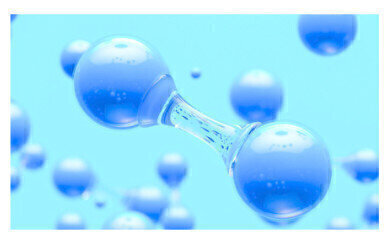Air Monitoring
Analysis of trace level impurities in hydrogen
Nov 14 2022
To reach sustainable development targets relating to climate change and to improve air quality, reducing carbon emissions caused by transportation is a key to succeeding. Transport generates currently over 25% of greenhouse gas emissions in developed nations and is the largest source of global, urban air pollution.
The development of hydrogen as a sustainable fuel could potentially reduce emissions of greenhouse gases significantly as well as dangerous air pollutants. By 2050, hydrogen might account for 32% of European fuel demand. Fuel cell systems in hydrogen vehicles need extremely high-purity hydrogen; trace levels of impurities can affect fuel cell performance and durability adversely. Impurities such as formaldehyde and formic acid at concentrations exceding 200 nmol/mol can cause considerable fuel cell performance degradation. The ISO 14687 standard has set the highest acceptable levels of concentrations of such impurities in hydrogen to ensure a high level of quality.
ISO 14687 conformity needs to be validated by precise analytical measurements to ensure that the levels of impurities are lower than the specified thresholds. Current analytical methods suited to this task are mainly techniques based on gas chromatography. However, a combination of several analytical techniques and methodologies are needed to perform the full scope of analysis necessary.
Chromatotec provide a series of analytical solutions facilitating the best combination of a high level of performance and economy. Chromatotec’s solutions for impurities in hydrogen comply with fuel cell energy norm EN17124. These solutions are based around GC-FID and HPLC systems and utilise various analytical methods for characterising hydrogen impurities: Total Hydrocarbon measurement, CO and CO2 measurement and formaldehyde and formic acid measurement.
Chromatotec provide the following analytical solutions:
- Humidity in pure H2 and DET H2O range 0-10 ppm
- chromaTHC for CH4 and NMTHC range 0-100 ppm
- CO and CO2 with chromaCO
- Formaldehyde 0,2 ppm with airmoHCHO
- Total halogenated compounds 50 ppb (hydrogen bromide,hydrogen chloride and chlorine)
- Sulphur in hydrogen : H2S only by H2S MEDOR form 1 ppb to ppm range (with specific column and heart cut for H2), Total Sulphur by chromaS 1ppb
- N2, Ar, He and O2 with chromaDID for range 0,1 – 10 ppm or higher, or with chromaTCD for range 5-10 000 ppm
- NH3 by FTUV analyser for 0 – 10 ppm range
Cost-effective and fully automatic turnkey solutions for the measurement of trace level impurities in hydrogen are now a reality. A combination of several analytical techniques and methodologies are necessary to perform the full scope of challenges, but it can be done by using industrial automatic gas chromatograph systems.
Digital Edition
IET 34.2 March 2024
April 2024
Gas Detection - Biogas batch fermentation system for laboratory use with automatic gas analysis in real time Water/Wastewater - Upcycling sensors for sustainable nature management - Prist...
View all digital editions
Events
Apr 30 2024 Melbourne, Australia
Apr 30 2024 Birmingham, UK
May 03 2024 Seoul, South Korea
May 05 2024 Seville, Spain
May 06 2024 Minneapolis, MN, USA


















